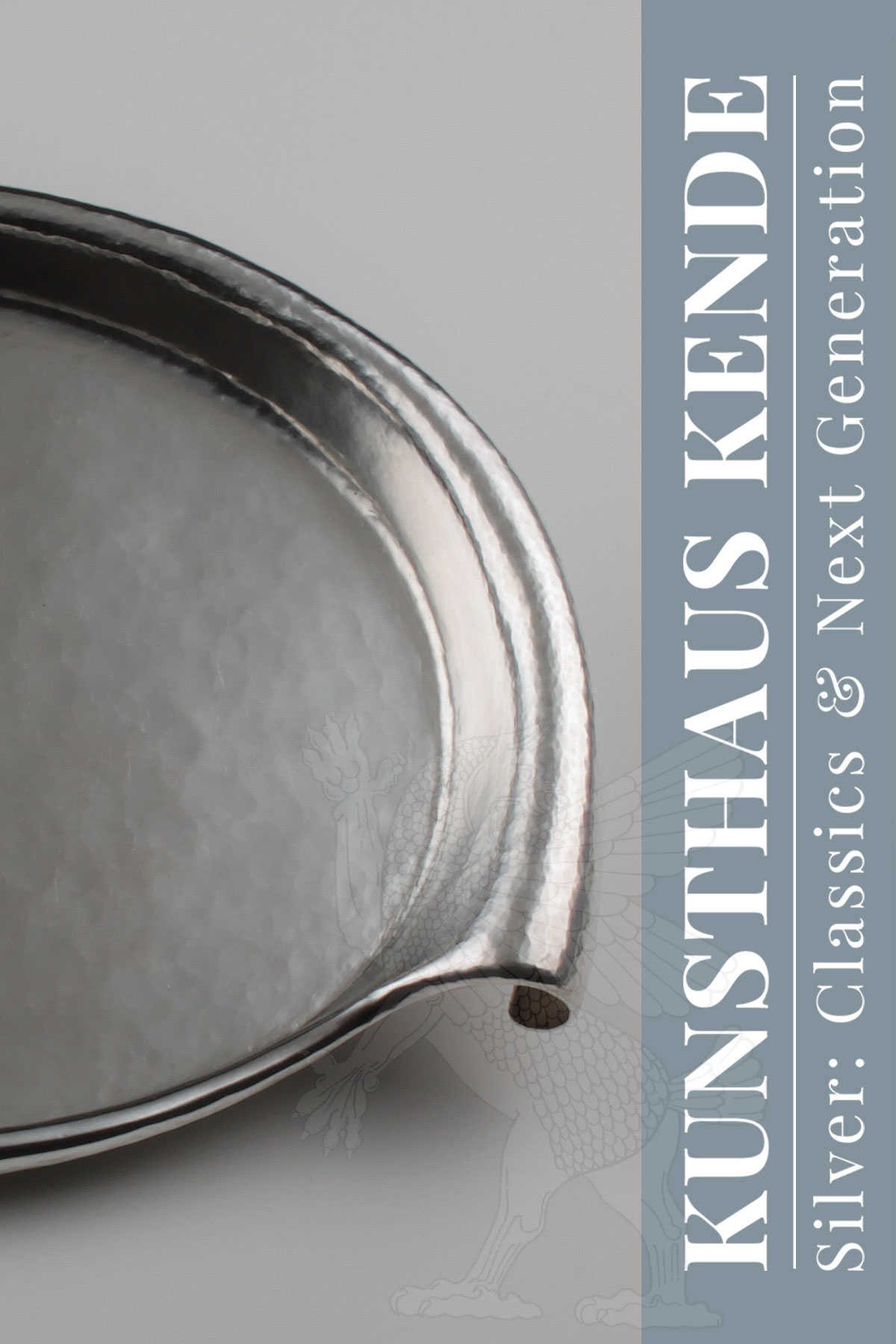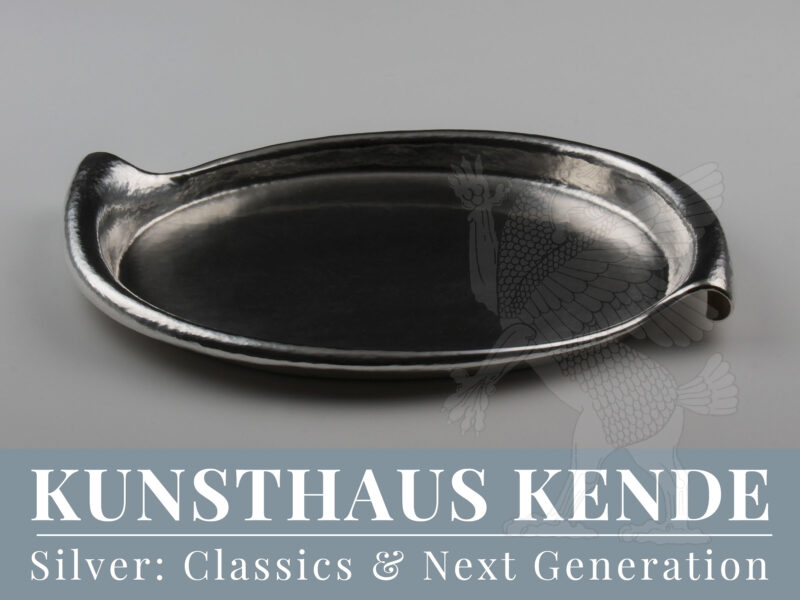Item number: 60150
A rare Art Déco sterling silver tray,
Stuttgart 1925/26
Oval shape, the rim tapering to an ornamentally curved, scrolled handle to the narrow sides. The rim, the handles and the centre are showing a subtle hammered surface.
Exceptional and elegant Art Deco tray in authentic condition and with an interesting history.
29.7 cm / 11.69″ length, 19.5 cm / 7.67″ width; 465.2 g / 14.95 oz
The tray shows a handwritten inscription to the underside ‘V…t 1925/26 – 3 teilig [“three parts”] No 55’ and has an adhesive label from the metal department of the Kunstgewerbeschule Stuttgart [Stuttgart School of Arts and Crafts] today the Staatliche Akademie der Bildenden Künste Stuttgart [State Academy of Fine Arts Stuttgart], which is labelled ‘No 13 RM 275’ in handwriting. It is also labelled ‘925’ and ‘465 gr’ in handwriting. Furthermore it is also stamped with the prescribed German hallmarks for silver (crescent and crown) and the fineness ‘925’.
The absence of a maker’s mark and the handwritten details show that this tray was the final work of a student at the Stuttgart School of Arts and Crafts. As the person who made it was still in training, it would not have been legal to hallmark it with a maker’s mark. There appear to have been two further pieces to this serving tray, presumably the ensemble was designed as a milk and sugar set on a tray, of which only this tray has survived. The fact that this work was created three years before the Great Depression makes it very remarkable that the choice of material for the tray was extremely valuable. Silver was already excessively expensive at this time, and the production of works in silver was completely banned a few years later in Germany. Such work was usually done in brass or copper, but not in sterling silver. In the course of the global economic recession, the Stuttgart School of Arts and Crafts also had to struggle with financial difficulties, which is why the management at the time ordered the sale of works by its graduates in order to regain liquidity.
There´s a strong probability to assume that this tray was not only the work of a wealthier graduate, but that the person also had the necessary craftsmanship to be able to execute the work in silver. The high level of skill of the craftsman is particularly evident in the hollow scrolls that are modelled into handles: these are only slightly protruding from the rim, which makes the execution of their plasticity – also in view of the solid thickness of the silver sheet – considerably more difficult. Nevertheless, the scrolls are by no means clumsy. In stylistic terms too, however, the sculptor demonstrated an eye for balance and proportion. The tray impresses with an exciting structure between the martellated surface with clearly recognisable hammer strokes and the skilfully curved rim, which subtly flattens out towards the front of the scroll-shaped handles.
The martelé of the surface is wonderfully preserved and by no means ‘blind polished’, the weight of 465.2 g as well as the old handwritten weight indication also proves that in almost a hundred years there has been almost no wear to the silver surface of the tray.





